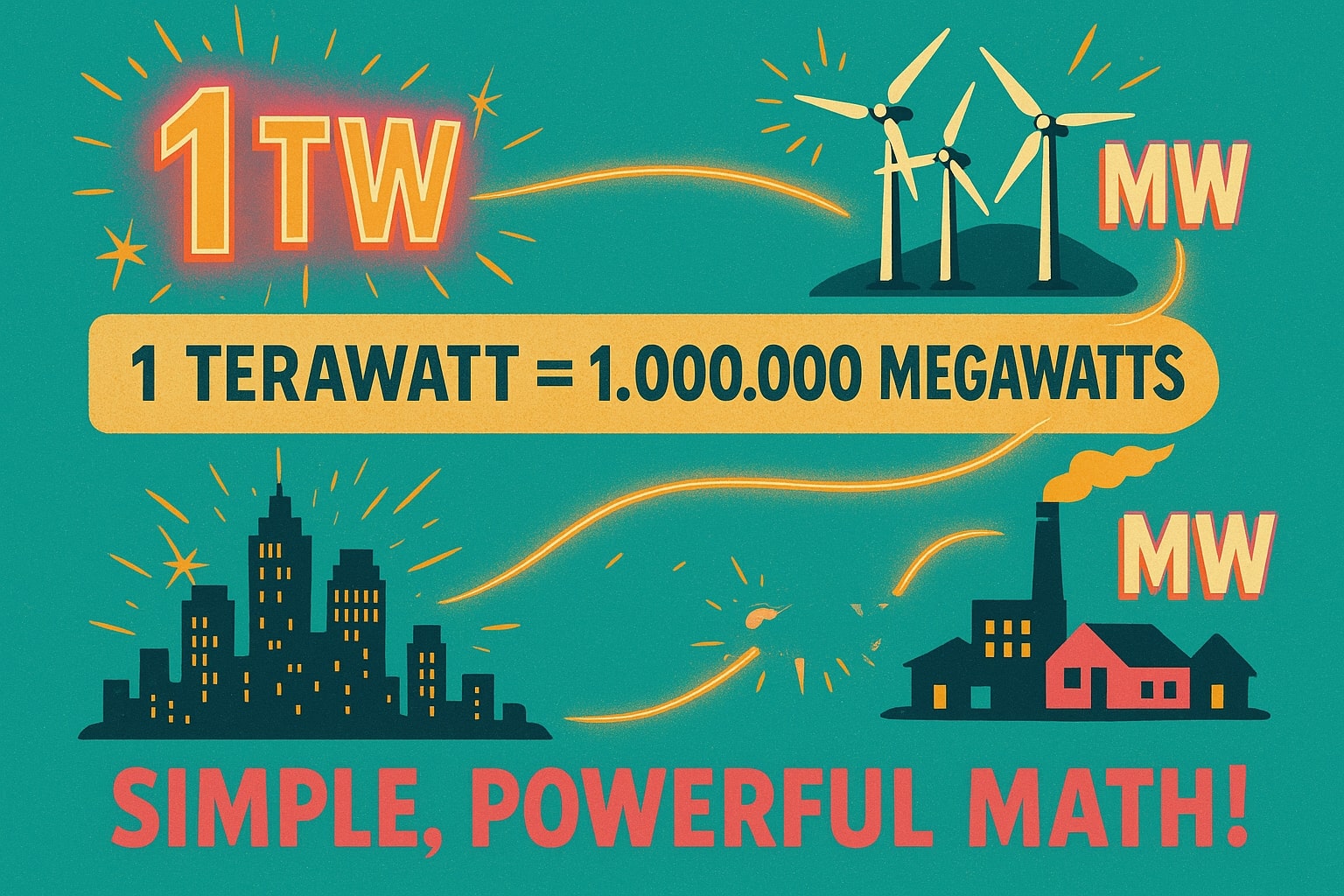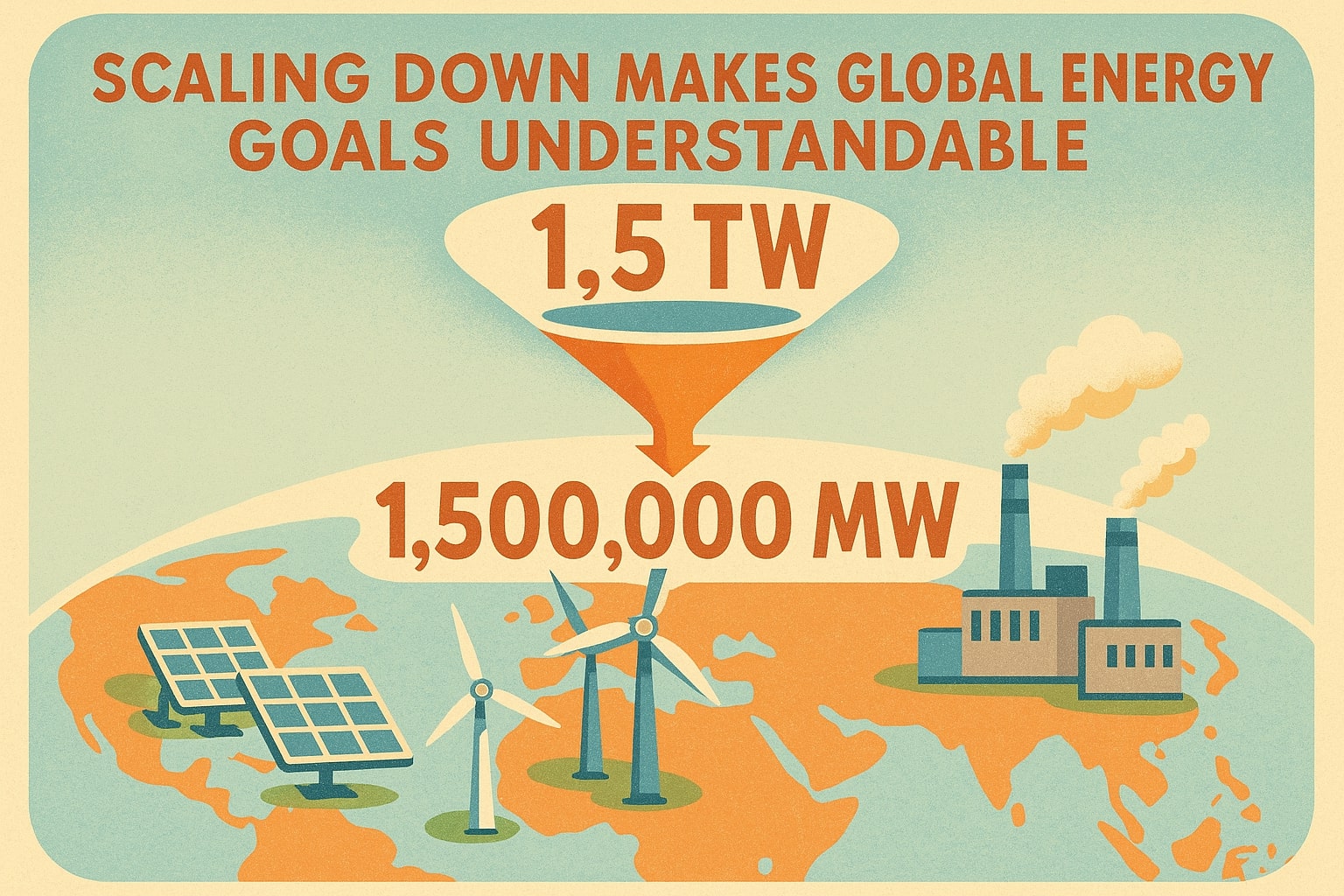Terawatt to Megawatt – How to convert TW to MW
Need to convert terawatt to megawatt? These two power units sit on vastly different scales. Megawatts describe the output of large power plants, industrial facilities, or city grids, while terawatts capture the electricity demand or production of entire countries — or the world. Although they’re separated by a factor of one million, converting between them is easy because they share the same metric system. Let’s break down the math, where these units are used, and why understanding this conversion is essential when comparing local power projects to global energy benchmarks.

What is a terawatt (TW)?
A terawatt equals 1 trillion watts (1 × 10¹² W), or 1 million megawatts (1,000,000 MW). It’s the scale used to discuss global energy demand, national electricity grids, and large-scale renewable energy goals.
The International Energy Agency (IEA) reports that the world’s average energy demand sits around 18–20 TW at any given time, a number that’s growing as more economies electrify and transition to renewable sources.
What is a megawatt (MW)?
A megawatt equals 1 million watts (1 × 10⁶ W), or 1,000 kilowatts (kW). It’s the standard measure for regional power systems, individual power plants, and industrial-scale energy production.
For example, a single utility-scale wind turbine might generate 2–5 MW, while a natural gas power plant can produce 500 MW, enough to power hundreds of thousands of homes. Megawatts provide a practical way to measure energy production at the project or city level.
How to convert terawatt to megawatt
The conversion is straightforward:
1 terawatt = 1,000,000 megawatts (1 TW = 10⁶ MW)
To convert:
Megawatts (MW) = Terawatts (TW) × 1,000,000
Example: If global hydropower generates 4 TW:
4 × 1,000,000 = 4,000,000 MW
Need a fast calculation? Use our Power Converter or explore other Conversion tools for instant, accurate results.
Did you know?
-
Global energy scale: Humanity’s total electricity capacity now exceeds 8 TW, which equals more than 8 million MW across all energy sources.
-
Renewable expansion: According to the International Renewable Energy Agency (IRENA), solar power alone could surpass 4 TW (4 million MW) of capacity by 2030.
-
Historic perspective: In the early 1900s, global electricity production was below 10 GW (10,000 MW) — less than 0.01 TW, showing the exponential growth of energy demand.
-
Natural power flow: The Earth’s atmosphere absorbs about 173,000 TW of solar energy daily, dwarfing humanity’s 20-TW consumption by orders of magnitude.
How Scaling Down Helps Compare Energy Projects
When energy goals and capacity are expressed in terawatts, the numbers can feel abstract. Reports from Bloomberg New Energy Finance note that converting terawatts to megawatts helps businesses and policymakers relate global figures to specific projects.
For example, if a nation plans to build 1.5 TW of renewable capacity, restating it as 1,500,000 MW makes it easier for regional energy planners and investors to gauge the number of power plants, turbines, and solar farms needed to hit the target.

From Global Grids to Regional Projects
Converting terawatt to megawatt is simply multiplying by a million, but understanding the difference between these scales is what makes the data useful. Terawatts help frame the big picture of global power consumption, while megawatts connect that perspective to local power generation and infrastructure planning.
For quick and reliable calculations, use our Power Converter or explore other Conversion tools to handle any power conversion efficiently.

